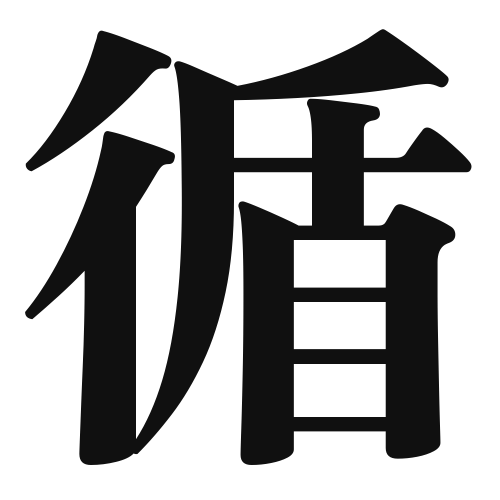1. Overview of Meaning
The kanji “循” (pronounced “jun” or “shun”) generally means “to circulate” or “to follow a sequence.” It conveys the idea of something moving in a circular or repetitive manner, often associated with cycles or processes.
2. Formation and Radical
Formation of the Kanji: The kanji “循” is a compound character (会意文字) that combines elements to convey its meaning. It consists of the radical for “water” (氵) which suggests flow, and the character “旬” which relates to time or a period, indicating a cyclical nature.
Radical: The radical of “循” is 氵, which is related to water and fluidity, reinforcing the concept of circulation.
3. Examples of Usage
Common Words and Phrases: Some frequently used words that include “循” are 循環 (じゅんかん, “circulation”) and 循序 (じゅんじょ, “order” or “sequence”).
Example Sentences in Daily Conversation:
- この川は水が循環しています。
(This river has a circulating flow of water.) - 彼は循序立てて話しました。
(He spoke in a well-ordered manner.)
4. Synonyms and Antonyms
Similar Kanji: A similar kanji is “回” (かい, “kai”), which also means “to turn” or “to revolve,” but it emphasizes the action of turning rather than the concept of a cycle.
Opposite Kanji: An antonym could be “断” (だん, “dan”), which means “to cut off” or “to interrupt,” representing a break in continuity.
5. Cultural and Historical Background
Relation to Japanese Culture: The concept of circulation is significant in Japanese culture, particularly in relation to nature and the seasons, reflecting the importance of harmony and balance.
Proverbs and Idioms: One relevant proverb is “循環する” (じゅんかんする), which means “to circulate,” often used in discussions about environmental sustainability and the importance of maintaining natural cycles.
